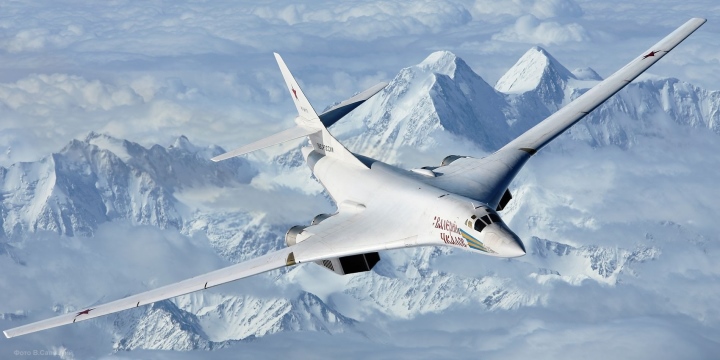In the realm of strategic aviation, the Tupolev TU-160, often referred to as the Blackjack, stands out as a symbol of power and advanced engineering. Since its inception, the TU-160 has captured the imagination of aviation enthusiasts and military strategists alike with its impressive performance and cutting-edge technology. As the largest and heaviest bomber ever built, the TU-160 continues to be a key asset in Russia’s strategic bomber fleet, embodying the pinnacle of Cold War-era aerospace innovation.
A Legacy of Supersonic Might
The TU-160, developed by the Tupolev Design Bureau, first took to the skies in the early 1980s. Designed to counter Western strategic bombers and deliver a formidable payload, the Blackjack was conceived during a time of intense geopolitical rivalry. Its primary mission was to conduct long-range strategic bombing and deter potential adversaries with its advanced capabilities.
Equipped with variable-sweep wings and a powerful turbofan engine, the TU-160 is capable of reaching supersonic speeds, making it a highly maneuverable and elusive target. Its large size and impressive range allow it to undertake extended missions across vast distances, showcasing the robust design and engineering prowess that went into its creation.

Design and Technological Marvel
The TU-160’s design is a testament to the ingenuity of Soviet aerospace engineering. With a wingspan that can extend up to 55 meters (180 feet), the Blackjack’s variable-sweep wings can adjust their angle for optimal performance during different phases of flight. This design feature enhances the bomber’s aerodynamic efficiency and speed, allowing it to fly at both subsonic and supersonic speeds.
One of the most striking aspects of the TU-160 is its advanced avionics and electronic warfare systems. The bomber is equipped with sophisticated radar and navigation systems that provide it with unparalleled situational awareness and precision targeting capabilities. These systems enable the TU-160 to conduct strategic strikes with high accuracy, even in the most challenging environments.

The Role of the TU-160 in Modern Warfare
In the current geopolitical landscape, the TU-160 remains a vital component of Russia’s strategic air power. Its role extends beyond mere intimidation; the Blackjack is a versatile platform capable of executing a range of missions, from conventional bombing to strategic deterrence. The bomber’s ability to carry a diverse array of munitions, including nuclear warheads, underscores its significance in Russia’s military strategy.
The TU-160’s long-range capability allows it to project power across the globe, making it a key asset for Russia’s strategic posture. Its ability to operate from various bases and conduct extended missions provides Russia with a potent tool for maintaining a credible strategic deterrent. In recent years, the TU-160 has been involved in numerous training exercises and operational missions, demonstrating its continued relevance and effectiveness.

Modernization and Future Prospects
Recognizing the importance of the TU-160 in its strategic arsenal, Russia has embarked on a modernization program to ensure that the Blackjack remains at the forefront of aerospace technology. The TU-160M2 variant, an upgraded version of the original bomber, features enhanced avionics, improved engines, and updated systems that extend its service life and operational capabilities.
The modernization efforts aim to integrate the latest technology into the TU-160, ensuring that it remains a formidable force in the future. With advancements in stealth technology, electronic warfare, and precision-guided munitions, the TU-160M2 is poised to continue its role as a key player in Russia’s strategic bomber fleet.
Global Impact and Strategic Significance
The TU-160’s impact extends beyond Russia’s borders, influencing global military dynamics and shaping international strategic calculations. As one of the most powerful and advanced bombers in the world, the Blackjack serves as a reminder of the strategic importance of air power in modern warfare. Its capabilities and performance continue to captivate military analysts and defense experts, highlighting the enduring legacy of Soviet aerospace engineering.
In the context of international relations, the TU-160’s presence underscores the importance of maintaining a credible deterrent and balancing military capabilities. Its continued development and deployment reflect the evolving nature of strategic air power and the need for advanced technologies in an increasingly complex global security environment.
Conclusion
The Tupolev TU-160, with its majestic design and supersonic performance, remains a symbol of advanced aerospace engineering and strategic power. As the largest and heaviest bomber ever built, the Blackjack continues to play a critical role in Russia’s military strategy, showcasing the enduring legacy of Cold War-era innovation. With ongoing modernization efforts and a continued focus on advanced technology, the TU-160 is set to remain a formidable force in the skies, embodying the strength and prowess of Russian aerospace capabilities.





